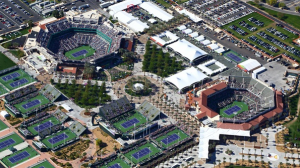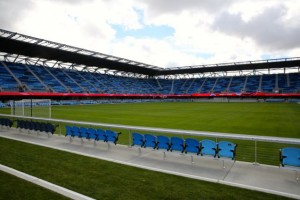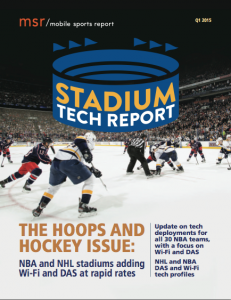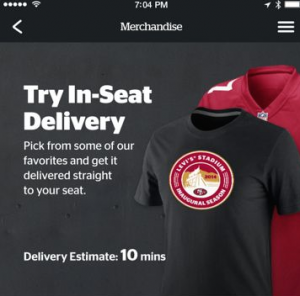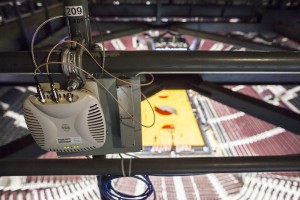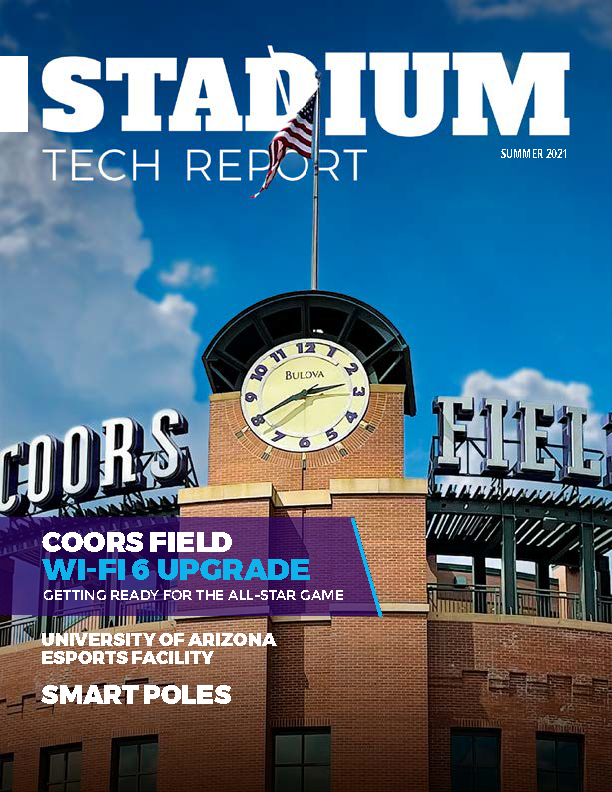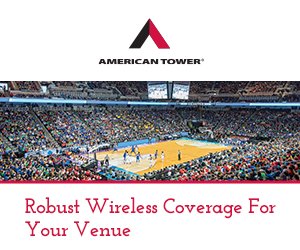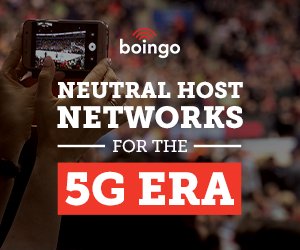
Indian Wells Tennis Garden, home of the BNP Paribas Open. Credit all photos: IWTG (Click on any photo for a larger image)
In tennis, a player gets two chances to serve the ball in. Mark McComas, lead project manager for the public Wi-Fi installation at the Indian Wells Tennis Garden in southern California, knew he’d have just one shot to get it all to work properly.
McComas, VP for systems integrator West Coast Networking of Palm Desert, Calif., began working on a wireless system to handle IWTG’s administrative and corporate offices as well as handle box-office scanning in July 2013. But then a smartphone app for the famed BNP Paribas Open tennis tournament with schedules, results, player bios and live streaming video got added to the mix, and IWTG’s public Wi-Fi network wasn’t so much born as mushroomed into being.
At this year’s tournament, where play in the women’s main draw started today, the 400,000-plus fans who attend over the two weeks of play will be able to once again use the app to enhance their on-site visit, with features like live video from different courts, updated stats and play-by-play audio coverage. It all runs on the free Wi-Fi service available at the venue, a project McComas and West Coast Networking helped deploy in time for last year’s event.
Building a net for tennis fans
McComas, working with engineering help from Hewlett-Packard, went to work building out the venue’s network elements, spending slightly more than $1 million along the way on things like:
— The design and installation of wireless switches, antennas and 138 access points from Ruckus Wireless;
— Ensuring sufficient bandwidth for the BNP Paribas smartphone app, developed by The App Company of Palos Verdes Estates, Calif.— Figuring out how to stream video from the four stadiums, and whether they should produce their own video locally; pick up feeds from the Association of Tennis Players and the Women’s Tennis Association; or work with a third-party. (They went with the ATP/WTA feed.)
— Configuring the subscriber gateway from RG Nets, Reno, Nev., that rate-limits onsite users to 5 Mbps upstream and 5 Mbps downstream.
In addition to staff and thousands of spectators to satisfy, there was also the man who owns IWTG and the BNP Paribas tournament: Oracle billionaire Larry Ellison, who’s not exactly known for initiating group hugs. According to McComas, the tournament staff was great to work with and very technology-fluent. “They gave us the tools and expected us to perform and do it right the first time,” he added.
Fine tuning the bandwidth
McComas also credits all the vendors involved for their input and cooperation. As a result, the network easily handled the demands from densely packed users and the steep pitch of each stadium. Predictably, that’s where the toughest engineering problems emerged. “The biggest problem was density and co-channel interference at 2.4 GHz and 5 GHz,” McComas said. “We used directional antennas and a corkscrew pattern in the upper and lower levels of Stadium 1 and Stadium 2, with directional antennas pointing at banks of seats.”
The capacity of Stadium 1 is 16,000 fans; Stadium 2 has 8,000 seats.In addition, if a user connects at 2.4 GHz, if their device can support it IWTG pushes them to 5 GHz, which McComas said was critical since the overlap on the 2.4 GHz part of the spectrum is only three channels.
Another critical piece in the network was the platform from RG Nets, which in addition to rate-limiting, also handles clustering, failover and load balancing. McComas said the box acts as a “captive portal,” so that once the user connects there and agrees to the terms and conditions, they get Internet access based on a group policy that throttles their connection. “Public Wi-Fi needs rate-limiting,” he said. “You could make the best wireless network out there, but if you’re not throttling the connection on a per-user basis, you’re going to fail.”
Video streaming, video encoding and app hosting are all handled off-premises; that reserves bandwidth and processing power for onsite users, rather than hosting those functions for the entire world, McComas said.
In 2014, McComas said IWTG had as many as 9,000 concurrent users on the tournament app, accounting for nearly 3 TB of data per day from the public Wi-Fi network alone. “It was insane how may people downloaded the app and were using it,” McComas laughed. In addition, IWTG had 4 Gbps of fiber in 2014 dedicated to the public Wi-Fi network; McComas said they’ll bump that up to 5.5 Gbps this year. They’re also adding about 20 additional APs around the venue to relieve potential congestion points.
“It was very clear that the Indian Wells organization wanted to do it once and do it right the first time, and also accommodate their growth over the next 10 years,” he added. “We engineered the network for growth.”
Terry Sweeney is a Los Angeles-based writer who’s covered IT and networking for more than 20 years. He is also founder and chief jarhead of Paragon Jams.

